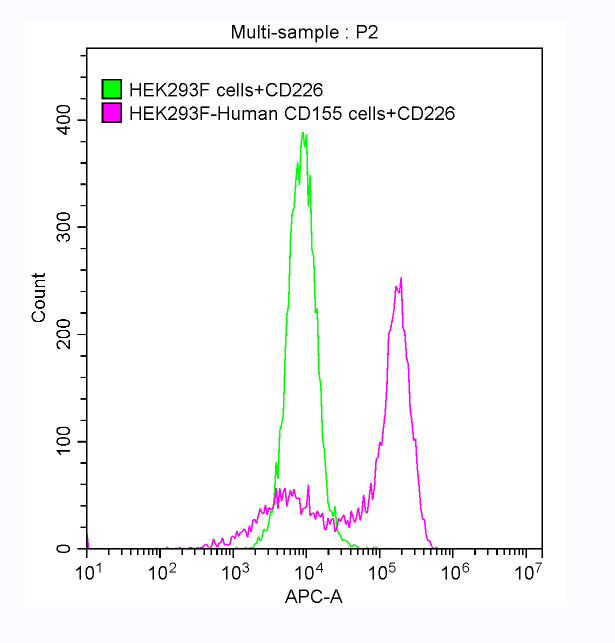Recombinant Rat CX3C chemokine receptor 1 (Cx3cr1)
-
货号:CSB-CF006236RA
-
规格:
-
来源:in vitro E.coli expression system
-
其他:
产品详情
-
基因名:
-
Uniprot No.:
-
别名:Cx3cr1; Rbs11; CX3C chemokine receptor 1; C-X3-C CKR-1; CX3CR1; Fractalkine receptor
-
种属:Rattus norvegicus (Rat)
-
蛋白长度:full length protein
-
表达区域:1-354
-
氨基酸序列MPTSFPELDLENFEYDDSAEACYLGDIVAFGTIFLSIFYSLVFTFGLVGNLLVVLALTNS RKSKSITDIYLLNLALSDLLFVATLPFWTHYLISHEGLHNAMCKLTTAFFFIGFFGGIFF ITVISIDRYLAIVLAANSMNNRTVQHGVTISLGVWAAAILVASPQFMFTKRKDNECLGDY PEVLQEIWPVLRNSEVNILGFVLPLLIMSFCYFRIVRTLFSCKNRKKARAIRLILLVVVV FFLFWTPYNIVIFLETLKFYNFFPSCGMKRDLRWALSVTETVAFSHCCLNPFIYAFAGEK FRRYLRHLYNKCLAVLCGRPVHAGFSTESQRSRQDSILSSLTHYTSEGEGSLLL
Note: The complete sequence including tag sequence, target protein sequence and linker sequence could be provided upon request. -
蛋白标签:N-terminal 10xHis-tagged
-
产品提供形式:Liquid or Lyophilized powder
Note: We will preferentially ship the format that we have in stock, however, if you have any special requirement for the format, please remark your requirement when placing the order, we will prepare according to your demand. -
缓冲液:Lyophilized from Tris/PBS-based buffer, 6% Trehalose, pH 8.0
-
储存条件:Store at -20°C/-80°C upon receipt, aliquoting is necessary for mutiple use. Avoid repeated freeze-thaw cycles.
-
保质期:The shelf life is related to many factors, storage state, buffer ingredients, storage temperature and the stability of the protein itself.
Generally, the shelf life of liquid form is 6 months at -20°C/-80°C. The shelf life of lyophilized form is 12 months at -20°C/-80°C. -
货期:Basically, we can dispatch the products out in 1-3 working days after receiving your orders. Delivery time may differ from different purchasing way or location, please kindly consult your local distributors for specific delivery time.Note: All of our proteins are default shipped with normal blue ice packs, if you request to ship with dry ice, please communicate with us in advance and extra fees will be charged.
-
注意事项:Repeated freezing and thawing is not recommended. Store working aliquots at 4°C for up to one week.
-
Datasheet & COA:Please contact us to get it.
相关产品
靶点详情
-
功能:Receptor for the C-X3-C chemokine fractalkine (CX3CL1) present on many early leukocyte cells; CX3CR1-CX3CL1 signaling exerts distinct functions in different tissue compartments, such as immune response, inflammation, cell adhesion and chemotaxis. CX3CR1-CX3CL1 signaling mediates cell migratory functions. Responsible for the recruitment of natural killer (NK) cells to inflamed tissues. Acts as a regulator of inflammation process leading to atherogenesis by mediating macrophage and monocyte recruitment to inflamed atherosclerotic plaques, promoting cell survival. Involved in airway inflammation by promoting interleukin 2-producing T helper (Th2) cell survival in inflamed lung. Involved in the migration of circulating monocytes to non-inflamed tissues, where they differentiate into macrophages and dendritic cells. Acts as a negative regulator of angiogenesis, probably by promoting macrophage chemotaxis. Plays a key role in brain microglia by regulating inflammatory response in the central nervous system (CNS) and regulating synapse maturation. Required to restrain the microglial inflammatory response in the CNS and the resulting parenchymal damage in response to pathological stimuli. Involved in brain development by participating in synaptic pruning, a natural process during which brain microglia eliminates extra synapses during postnatal development. Synaptic pruning by microglia is required to promote the maturation of circuit connectivity during brain development. Acts as an important regulator of the gut microbiota by controlling immunity to intestinal bacteria and fungi. Expressed in lamina propria dendritic cells in the small intestine, which form transepithelial dendrites capable of taking up bacteria in order to provide defense against pathogenic bacteria. Required to initiate innate and adaptive immune responses against dissemination of commensal fungi (mycobiota) component of the gut: expressed in mononuclear phagocytes (MNPs) and acts by promoting induction of antifungal IgG antibodies response to confer protection against disseminated C.albicans or C.auris infection. Also acts as a receptor for C-C motif chemokine CCL26, inducing cell chemotaxis.
-
基因功能参考文献:
- The present study revealed an involvement of NF-kappaB and the CX3CL1/CX3CR1 axis in Tetanic Sciatic Stimulation-induced pathological pain. PMID: 28612319
- Results suggest fractalkine-CX3CR1 signaling pathway role in limbic seizure-induced hippocampal pathologies including microglial activation, neurodegeneration and neuroblast production PMID: 25461978
- Results suggest that CX3C chemokine receptor 1 (CX3CR1) activation of pancreatic stellate cells (PSCs) could be important in their effects in pancreatitis, especially to PSCs proliferation in pancreatitis where CX3CL1 levels are elevated. PMID: 24681877
- It plays an important role in the neuroinflammatory response PMID: 23855980
- TMJ inflammation induced significant upregulation of CX3CR1 in the trigeminal subnucleus caudalis. PMID: 23110394
- The microglia CX3CR1/p38 MAP kinase signaling cascade potentially plays an important role in facilitating pain processing in rats with bone cancer pain. PMID: 22613229
- FKN, and its receptor, CX3CR1, may modulate cardiovascular responses in the solitary nucleus of normal healthy rats via the phosphoinositide 3-kinase intracellular signaling pathway. PMID: 22387113
- Autologous implantation of nucleus pulposus induces hyperalgesia and allodynia leading to upregulation of fractalkine and its receptor in spinal neurons and glia, implicating fractalkine in association with radicular pain. PMID: 21224760
- CX3CR1 contributes to the dendritic cell-endothelial cell interaction. PMID: 20364328
显示更多
收起更多
-
亚细胞定位:Cell membrane; Multi-pass membrane protein.
-
蛋白家族:G-protein coupled receptor 1 family
-
组织特异性:Most abundant in adult spinal cord, brain, kidney, gut, uterus and testes.
-
数据库链接:
KEGG: rno:171056
STRING: 10116.ENSRNOP00000025019
UniGene: Rn.10482
Most popular with customers
-
Recombinant Human CD226 antigen (CD226), partial (Active)
Express system: Mammalian cell
Species: Homo sapiens (Human)
-
Recombinant Human Intestinal-type alkaline phosphatase (ALPI) (Active)
Express system: Mammalian cell
Species: Homo sapiens (Human)
-
Recombinant Human Desmoglein-3 (DSG3), partial (Active)
Express system: Baculovirus
Species: Homo sapiens (Human)
-
Recombinant Mouse Cytotoxic and regulatory T-cell molecule (Crtam), partial (Active)
Express system: Mammalian cell
Species: Mus musculus (Mouse)
-
Recombinant Human Transmembrane 4 L6 family member 1(TM4SF1)-VLPs (Active)
Express system: Mammalian cell
Species: Homo sapiens (Human)

















